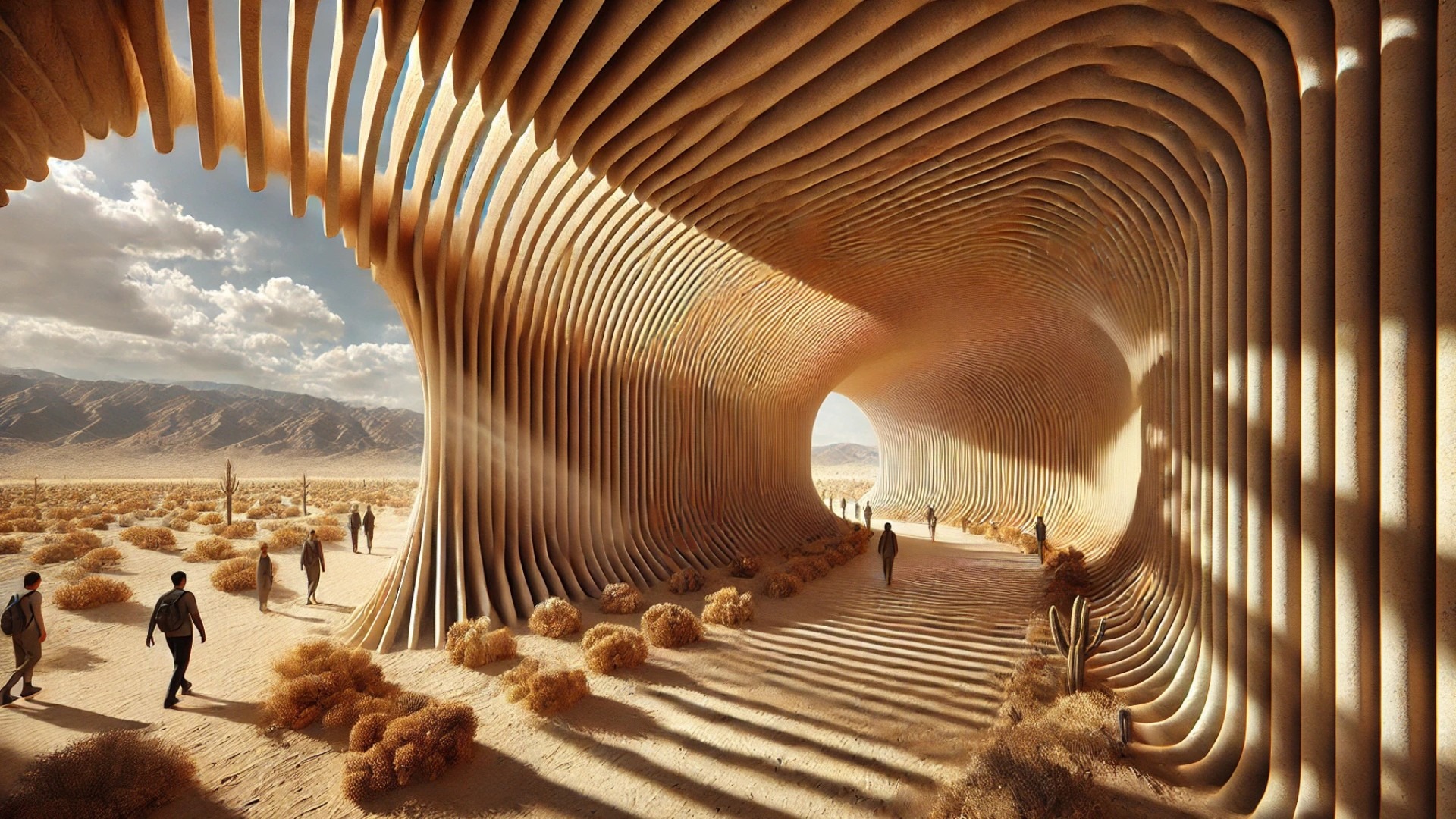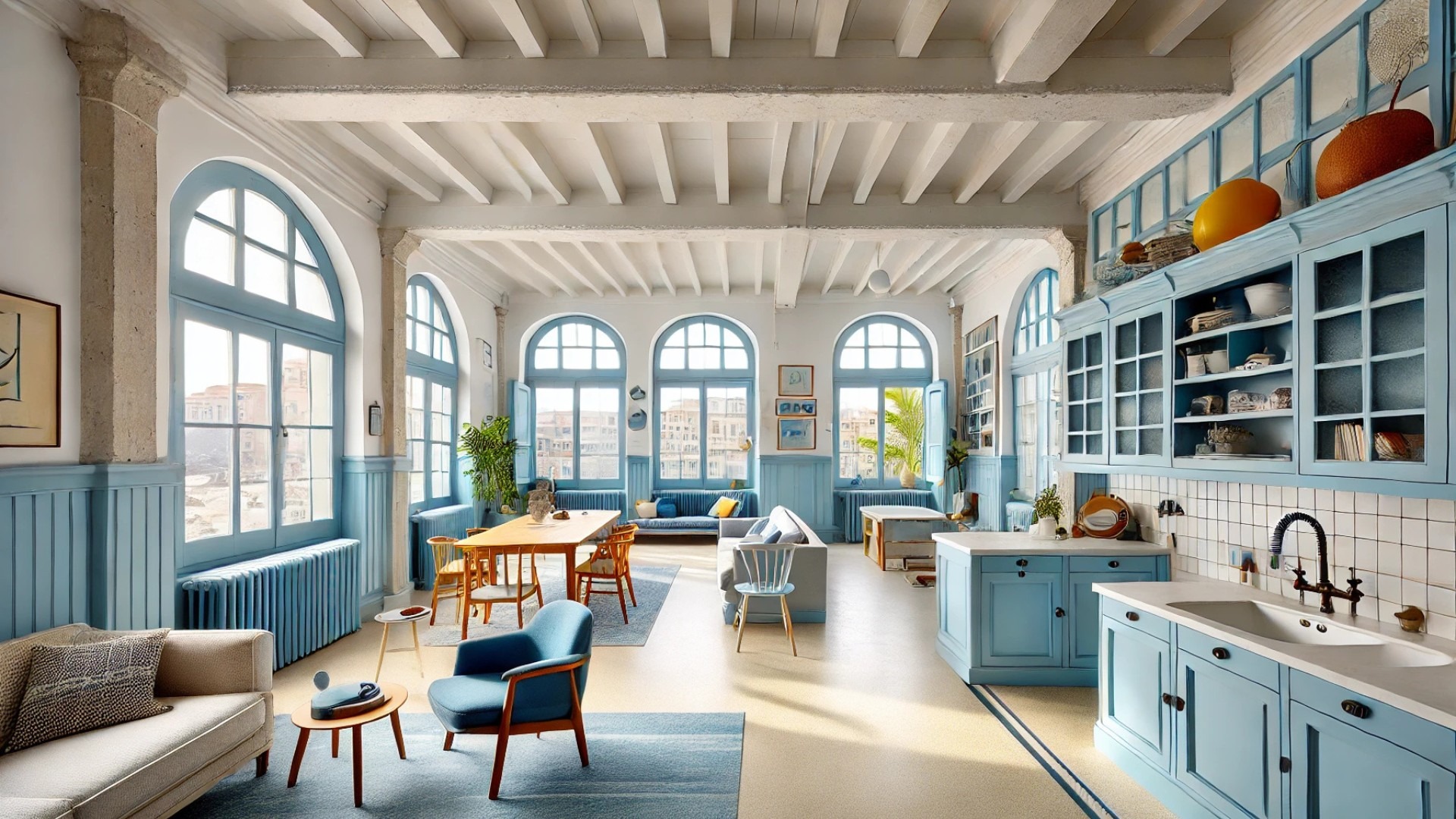
A Dance Between Earth and Technology: Ronald Rael’s Adobe Oasis
In the heart of California’s Coachella Valley, an extraordinary installation called Adobe Oasis emerges, captivating onlookers with its intricate, ribbed passageways crafted from earth. Designed by architect and artist Ronald Rael for the renowned Desert X exhibition, this installation harmonizes ancient construction techniques with cutting-edge digital fabrication. It pays homage to the mud-building traditions steeped in history—specifically those from Colorado’s San Luis Valley—before the U.S.-Mexico border was defined.
A Sustainable Challenge to Traditional Construction
While the architectural landscape is often dominated by carbon-intensive materials, Rael’s work presents a vital counter-narrative. By using adobe, which has been shaped by generations into an efficient and sustainable building material, he argues for a shift towards a greener construction future. Adobe’s natural insulating properties and fire-resistant qualities make it an ideal choice, particularly as the world increasingly grapples with climate-related challenges.
Embracing Craftsmanship and Community in Building
For Rael, creating Adobe Oasis is more than a technical exercise; it is a deeply sensory experience. His interaction with the robotic printer is described as a delicate dance, one that reflects a responsive relationship with the earthen material itself. This methodology not only revives traditional crafting techniques but also allows Rael to adjust as the installation organically takes shape, fostering a tangible connection to the land.
Lessons from Historical Earth Architecture
With each adobe wall that rises, Rael weaves a narrative that spans 10,000 years. The ancient methods of building with earth have persisted through time, seen in structures from the mudbrick ziggurats of Mesopotamia to the domed mosques of Mali. This history enriches Rael’s work, positioning it within a legacy while also propelling it into contemporary dialogues about sustainability and design.
The Future of Adobe Construction
Reflecting on the evolution of earthen construction, Rael's journey—beginning with his family roots in adobe building—reveals an urgent desire to modernize how we think about housing. The Casa Covida project in Colorado exemplifies his vision of employing 3D printing to lower costs and increase efficiency in building with earth, challenging outdated perceptions of the feasibility of adobe as a construction material.
Beyond Aesthetics: The Cultural Significance
The significance of Rael’s work reaches beyond mere aesthetics. It brings to light the cultural traditions linked to adobe construction and how they can coalesce with modern needs. Adobe Oasis not only serves as a statement on sustainable design but also invites discussions about cultural heritage and the innovative paths we might forge while honoring our past.
As the world urgently seeks solutions to the climate crisis, Ronald Rael’s explorations offer refreshing alternatives that marry ancient knowledge with contemporary technology. This installation, on view until May 11, 2025, is an invitation for everyone to reconsider the narratives of construction, community, and sustainability.
 Add Row
Add Row  Add
Add 

 Add Row
Add Row  Add Element
Add Element 




Write A Comment